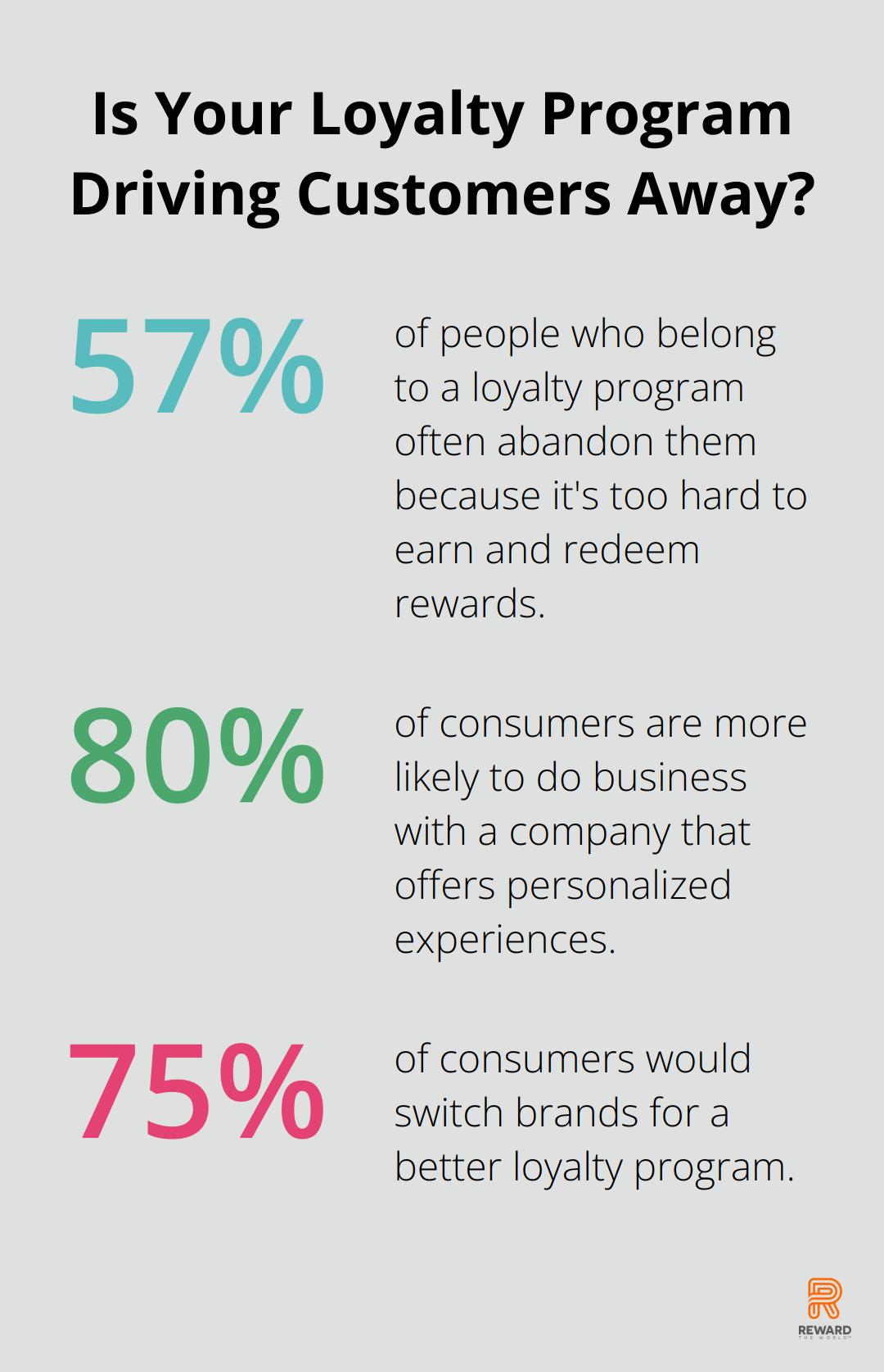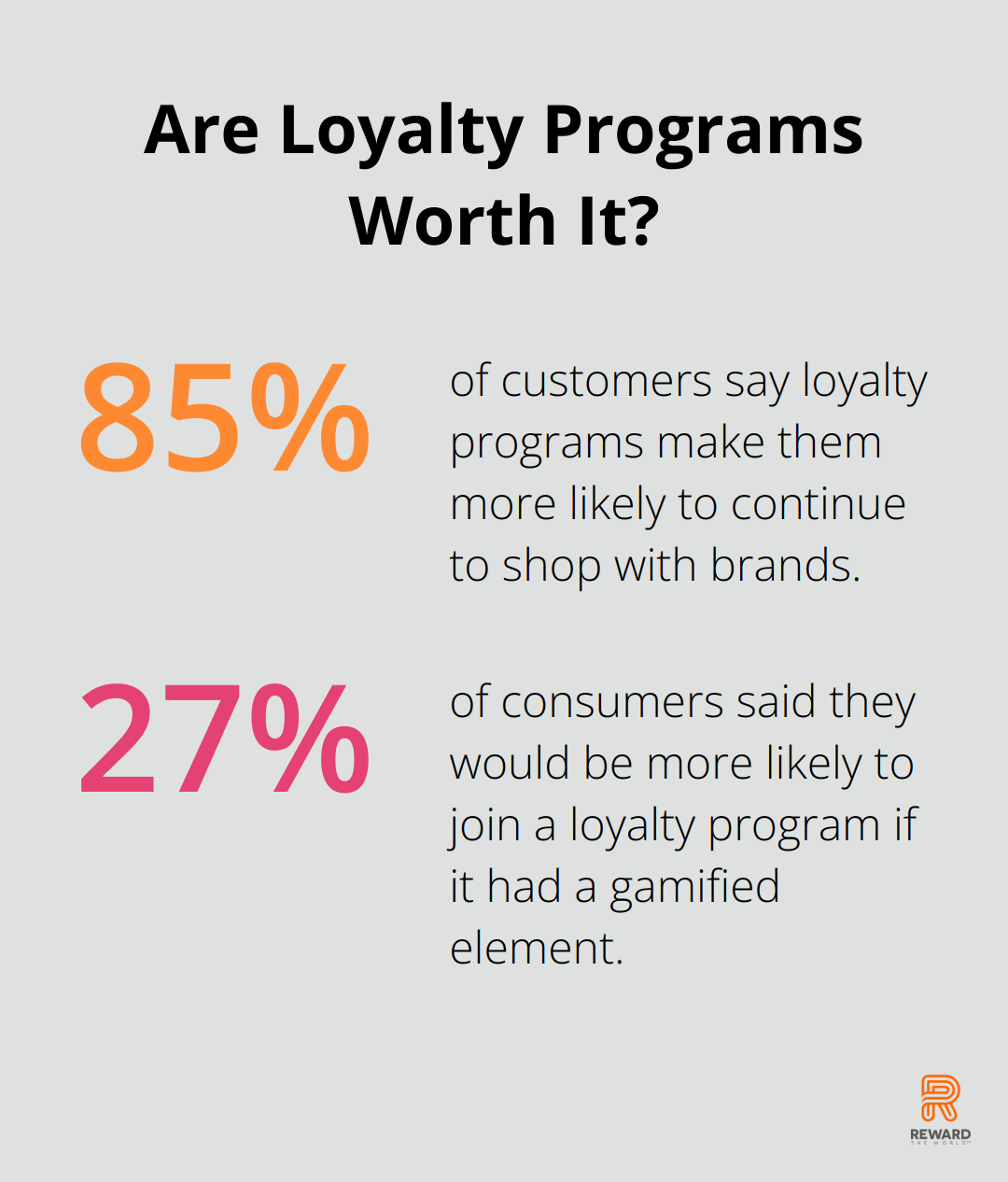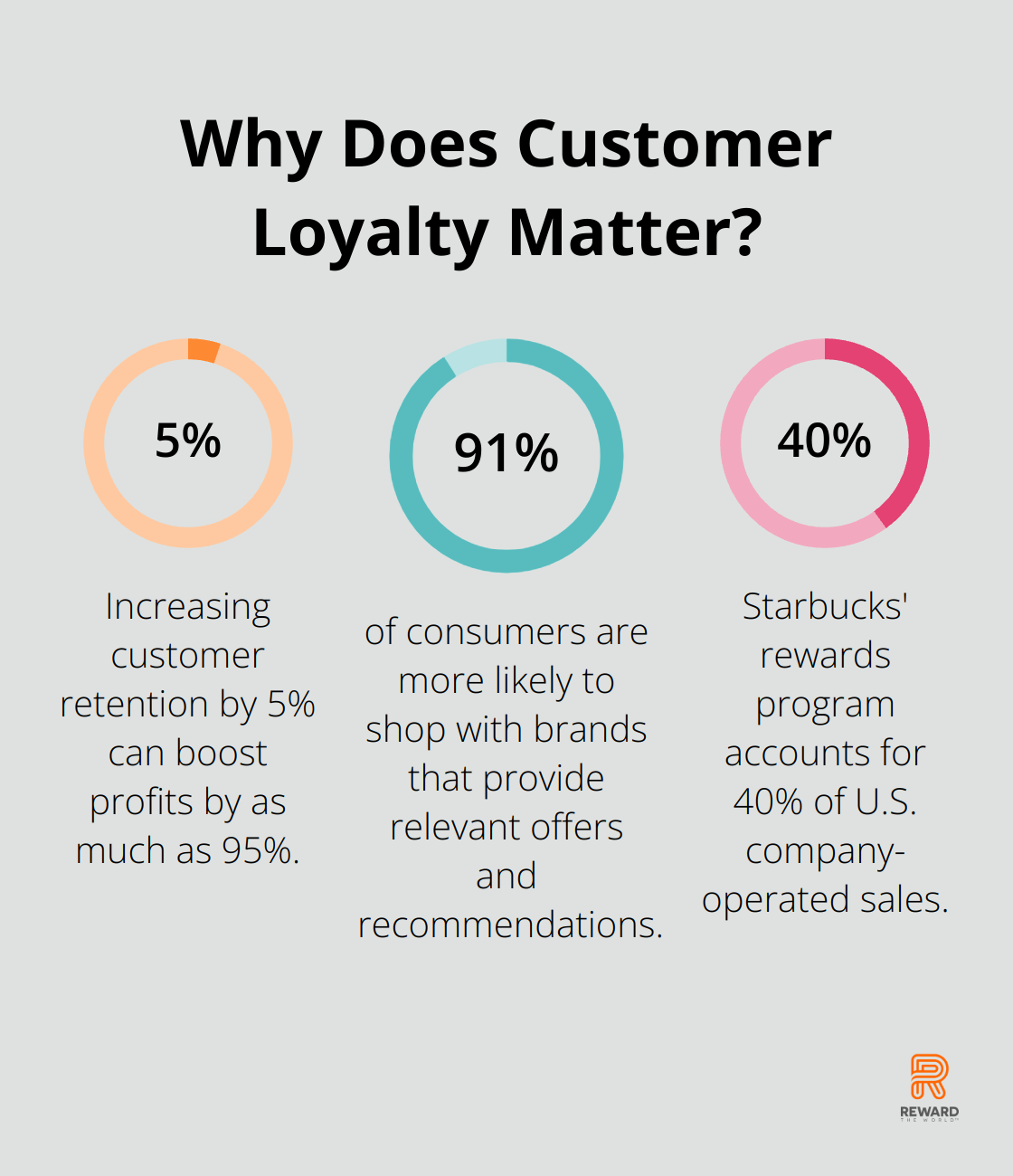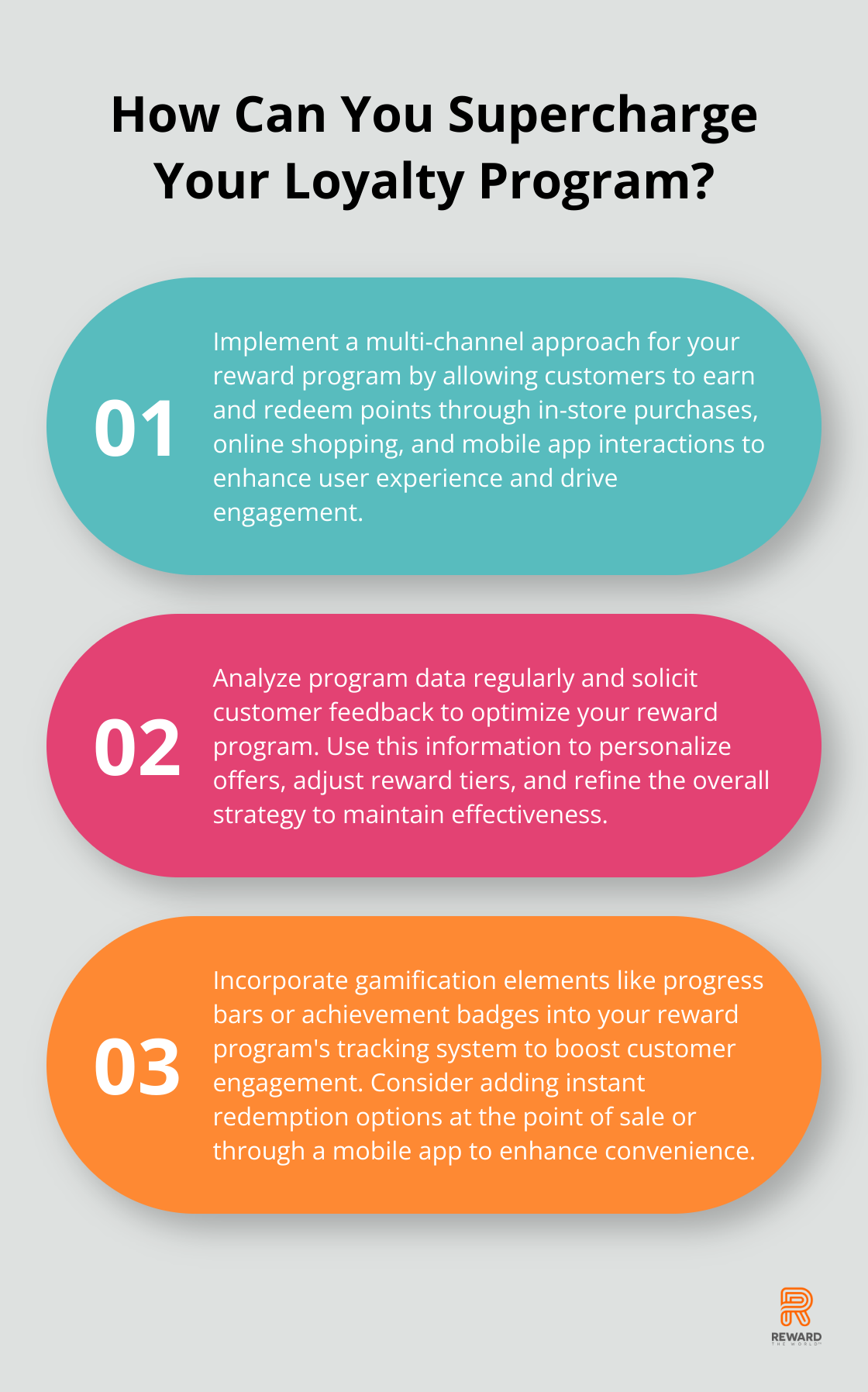
Reward programs have become a cornerstone of modern business strategies. At Reward the World, we’ve seen firsthand how these programs can transform customer relationships and drive business growth.
But what are reward programs, exactly? In this post, we’ll break down the essentials of reward programs, explore how they work, and highlight their benefits for businesses of all sizes.
What Are Reward Programs?
Definition and Purpose
Reward programs are strategic initiatives designed to incentivize customer loyalty and encourage repeat business. These programs offer tangible benefits to customers in exchange for their continued patronage. Over 70% of consumers are more likely to recommend a brand with a good customer loyalty program.
Types of Reward Programs
Businesses implement various models to suit their customer base and industry:
- Points-based Systems: Customers earn points for purchases, which they can redeem for rewards. For example, Starbucks Rewards allows customers to earn ‘stars’ for every dollar spent, redeemable for free drinks or food items.
- Tiered Programs: These offer increasing benefits as customers reach higher levels of engagement. American Express’s Membership Rewards program provides enhanced perks for cardholders who spend more annually.
- Cash Back Programs: Popular among credit card companies, these programs offer a percentage of spending back to the customer. The Citi Double Cash Card gives 2% cash back on all purchases (1% when you buy and 1% when you pay your bill).
Key Components of Successful Programs
Effective reward programs share several critical elements:
- Simplicity: Customers should easily understand how to earn and redeem rewards. A survey found that 57% of people who belong to a loyalty program often abandon them because it’s too hard to earn and redeem rewards.
- Personalization: A report by Epsilon found that 80% of consumers are more likely to do business with a company that offers personalized experiences. This could include tailoring rewards to individual preferences or offering exclusive birthday perks.
- Clear Value Proposition: Customers need to perceive the rewards as worth their continued loyalty. A KPMG study showed that 75% of consumers would switch brands for a better loyalty program.
- Multi-channel Approach: The most effective programs incorporate various touchpoints for earning and redeeming rewards (in-store, online, and through mobile apps). This flexibility enhances user experience and drives engagement.
- Regular Analysis and Optimization: Successful programs require ongoing management. Analyzing program data and soliciting customer feedback are essential practices for maintaining an effective rewards initiative.

Now that we’ve explored the fundamentals of reward programs, let’s examine how these programs operate in practice.
How Reward Programs Operate
Earning Points or Rewards
Reward programs center around a point accumulation system. Customers typically earn points through purchases, but innovative programs expand earning opportunities. Some companies award points for social media engagement, referrals, or eco-friendly actions. (Starbucks Rewards members, for instance, earn stars by bringing reusable cups to stores.)

To boost engagement, many programs offer bonus earning periods or multipliers. During these times, customers can earn extra points, accelerating their progress towards rewards. A study found that 85% of customers say loyalty programs make them more likely to continue to shop with brands.
Redeeming Rewards
The redemption process showcases the tangible benefits of customer loyalty. Effective programs offer various redemption options to cater to different preferences. These include discounts on future purchases, free products or services, exclusive experiences, or even charitable donations.
Flexibility and perceived value are key to successful redemption. Some programs introduce lower-tier rewards that are easier to attain, while still offering aspirational high-value rewards for dedicated customers. Many companies now offer instant redemption at the point of sale or through mobile apps, eliminating friction and enhancing the customer experience.
Tracking and Managing Rewards
Technology plays a crucial role in the effective tracking and management of rewards. Most modern reward programs utilize mobile apps or online portections where customers can view their point balances, track progress towards rewards, and manage their accounts.
These platforms often incorporate gamification elements to boost engagement. Progress bars or achievement badges can motivate customers to reach the next tier or unlock new rewards. A study found that 27% of consumers said they would be more likely to join a loyalty program if it had a gamified element.
For businesses, robust tracking systems provide valuable data on customer behavior and preferences. This information can be used to personalize offers, optimize the program, and inform broader business strategies.
The success of a reward program hinges on its ability to engage customers consistently. As we explore in the next section, the benefits of implementing such programs extend far beyond customer retention, offering businesses a wealth of opportunities for growth and insight.
Why Reward Programs Are Game Changers
Boosting Customer Retention
Reward programs significantly increase customer loyalty and retention. A study by Bain & Company reveals that increasing retention by as little as 5% can boost profits by as much as 95%. This dramatic impact stems from the psychological principle of reciprocity – customers feel compelled to continue their relationship with a brand when they receive rewards.

Sephora’s Beauty Insider program exemplifies this effect. With over 25 million loyal members (accounting for 80% of Sephora’s annual sales), it demonstrates how a well-executed reward program transforms casual shoppers into brand advocates.
Increasing Sales and Revenue
Reward programs directly contribute to increased sales and revenue. The 2020 Loyalty Report by Bond found that 79% of consumers are more likely to continue doing business with brands offering loyalty programs. Moreover, program members spend 27% more than non-members on average.
Starbucks provides a compelling example. Their rewards program now accounts for 40% of U.S. company-operated sales, showcasing the potential for substantial revenue growth through loyalty initiatives.
Generating Valuable Customer Insights
One of the most underrated benefits of reward programs is the wealth of customer data they generate. This information proves invaluable for businesses looking to refine their strategies and personalize their offerings.
Tesco’s Clubcard program in the UK collects data on 16 million members. This vast dataset allows Tesco to tailor promotions, optimize product placement, and even influence new product development based on customer preferences and buying patterns.
Businesses can create hyper-targeted marketing campaigns by leveraging these insights, resulting in higher conversion rates and improved ROI. A report by Accenture found that 91% of consumers are more likely to shop with brands that provide relevant offers and recommendations.
Enhancing Customer Experience
Reward programs significantly improve the overall customer experience. They add value beyond the initial purchase, creating a sense of exclusivity and appreciation. This enhanced experience often leads to increased customer satisfaction and positive word-of-mouth marketing.
For instance, Amazon Prime (a paid loyalty program) offers members benefits like free shipping, exclusive deals, and access to streaming services. These perks not only incentivize repeat purchases but also create a more enjoyable and convenient shopping experience for customers.
Driving Competitive Advantage
In today’s competitive market, a well-designed reward program can set a business apart from its competitors. It provides a unique value proposition that can attract new customers and retain existing ones.
For example, the airline industry heavily relies on loyalty programs to maintain a competitive edge. Programs like Delta SkyMiles offer tiered benefits, partner rewards, and exclusive experiences that encourage customers to choose Delta over other airlines consistently.
Final Thoughts
Reward programs have become essential in modern business strategies. These programs incentivize customer loyalty and encourage repeat business by offering tangible benefits that resonate with consumers. From points-based systems to tiered programs and cashback initiatives, businesses can tailor their reward programs to specific needs and customer preferences.

Successful reward programs drive increased sales, provide valuable customer insights, and enhance the overall customer experience. They offer a significant competitive advantage in an era where customer loyalty is increasingly difficult to maintain. Reward programs provide a powerful means to build lasting relationships with consumers and stay ahead in the marketplace.
Businesses that want to implement or improve their reward programs can benefit from platforms like Reward the World. With global reach and instant reward delivery, Reward the World equips businesses with tools to create impactful reward programs (which drive customer engagement and boost company performance). Understanding what reward programs are and how they work empowers businesses to harness their full potential.
